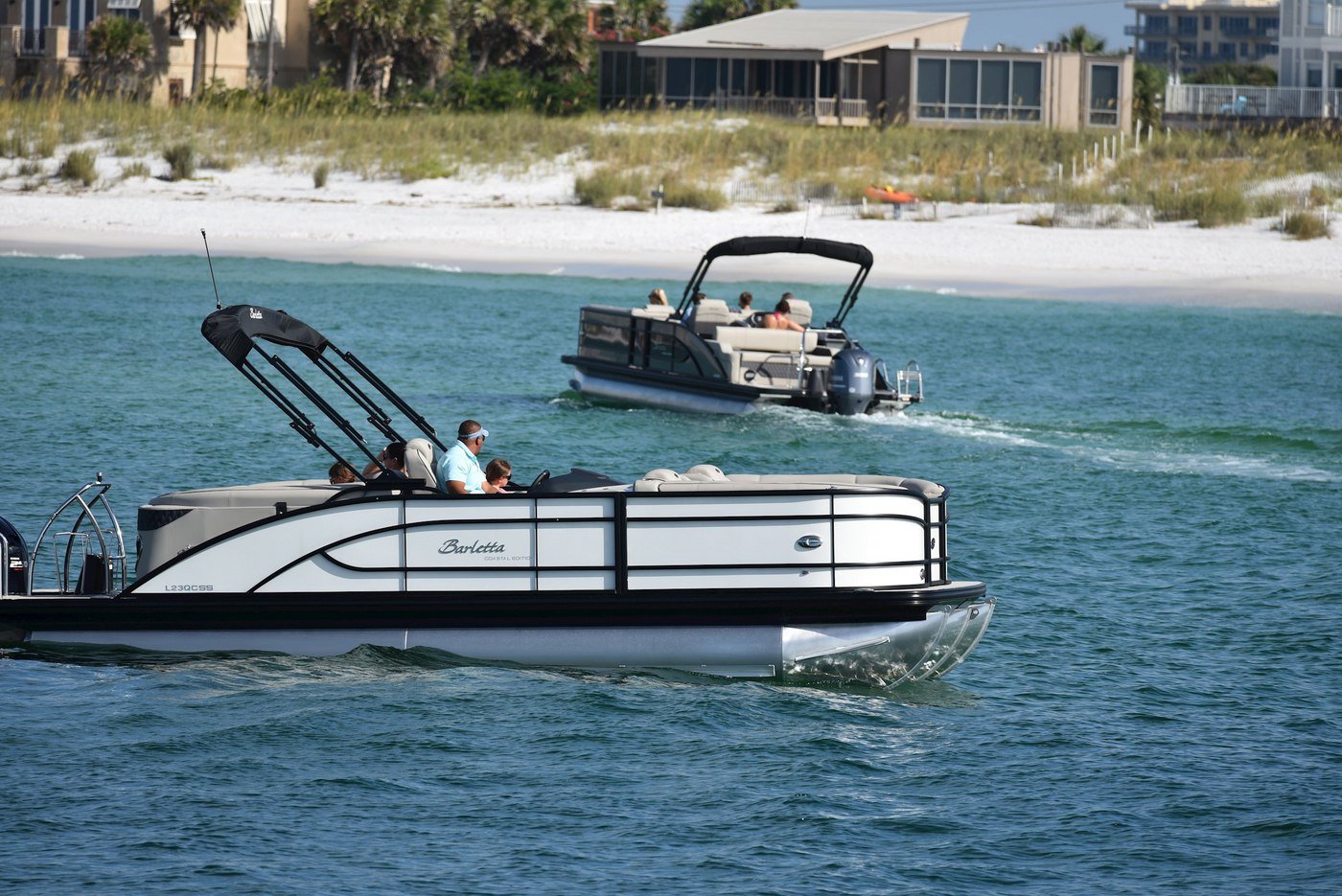Who has the Right of Way on a Boat? (Rules of the Water)
Meet Joe, new to the boating scene and proud owner of a brand new pontoon boat. Joe has recently moved to a house on the water and is ready to jump on board. The body of water that Joe has chosen is large and heavily populated, especially on big weekends.
Being in his 50’s, Joe has had a driver’s license for longer than he can remember and a squeaky clean driving record. Never an accident or a speeding ticket for this guy! All this to say that Joe feels confident as the captain of his new pontoon boat.
Joe has been driving a car for 30 plus years now and knows just how easy it is to get behind the wheel and go. He doesn’t feel the need to take a boater’s course or explore the option of obtaining a boating license because, again, he’s a top-notch driver.
If you think this all sounds pretty good so far, we need to talk.
Just because Joe can drive a car better than most does not mean he’s prepared to operate his pontoon boat safely. I cannot stress this enough, if you’re in the same boat as Joe, please take the time to educate yourself on navigation rules and boating safety.
There are tons of navigation rules to know, but these are the most important for safe boating. Here are the main navigation rules that you should know before ever stepping foot behind the helm of a boat.
What to do When Meeting Another Boat Head-On
When approaching another vessel head-on, you should navigate your course starboard, meaning you will pass each other on the port side. If you’re unsure of what these terms mean, check out the article on boating terms below.
An indicator of a head-on meeting at night is if you see both side lights, green and red, of the opposing vessel at the same time.

Related reading: Top 20 Boating Terms Every Boater Should Know
Which Boat has the Right of Way When Crossing Paths?
When two vessels are in a situation where they are crossing paths, it’s critical to know who has the right of way. The vessel that has the opposing boat coming up on its starboard side is called the give-way vessel. The boat coming in from the starboard side is called the stand-on vessel.
The stand-on vessel has the right of way, and it is up to the give-way vessel to maneuver in a way that will avoid a collision. You will know this at night if you see the red port light crossing from right to left in front of you. In that case, you are the give-way vessel and should maneuver to avoid collision.
If you see the green starboard light crossing from left to right in front of you, you are the stand-on vessel and should continue your course.

What Does it Mean to Overtake Another Boat?
To overtake another vessel means to approach the stern of the opposing boat and pass by on either side, continually moving forward. The boat who is overtaking is the give-way vessel and should maneuver in a way to avoid collision with the stand-on vessel.
If you were to overtake another vessel at night, you would only see the stern light of the stand-on vessel and not the red and green navigation lights. It is up to the give-way vessel to safely maneuver around the stand-on vessel. This rule even applies to a vessel that’s under sail.

Do Vessels Under Sail Have the Right of Way?
Vessels under sail refer to any boat that is operating without the use of a motor. Typical boats that operate in this way are sailboats.
A vessel under sail has the right of way over a boat utilizing a motor. The exception to this is if the vessel under sail is overtaking a powerboat.
Operating in a Narrow Channel
When operating your boat in a narrow channel, you must always give way to the passing vessel if they have difficulty maneuvering due to size or there’s a potential they could run aground. This is typically the case for large vessels that have a more difficult time operating in narrow, shallow spaces.
When entering and exiting small channels such as those found on inland lakes, you should give right away to the boat that is exiting the channel. On the Great Lakes and Western River system, vessels going downstream are stand-on; vessels going upstream must give way according to Boat U.S. Foundation.
Know how to Navigate
Once you know the rules of the water, operating a boat is much easier. Knowing how to navigate is a critical step in educating yourself on boaters safety. If every boater took the time to learn this information, we’d all be better off on the water.
That said, always keep in mind that just because you know how to navigate, doesn’t mean the other boater does. Stay vigilant and take care when passing other boats in any situation. Even if you’re the stand-on boat, it’s critical to be aware that the give-way boat may not know the direction they’re supposed to go.
A safe boater is a happy boater. That's why I strongly suggest taking a course and getting your boating license at any age. There are a ton of resources online that can help steer you in the right direction for boaters education.
OTHER HELPFUL ARTICLES:



